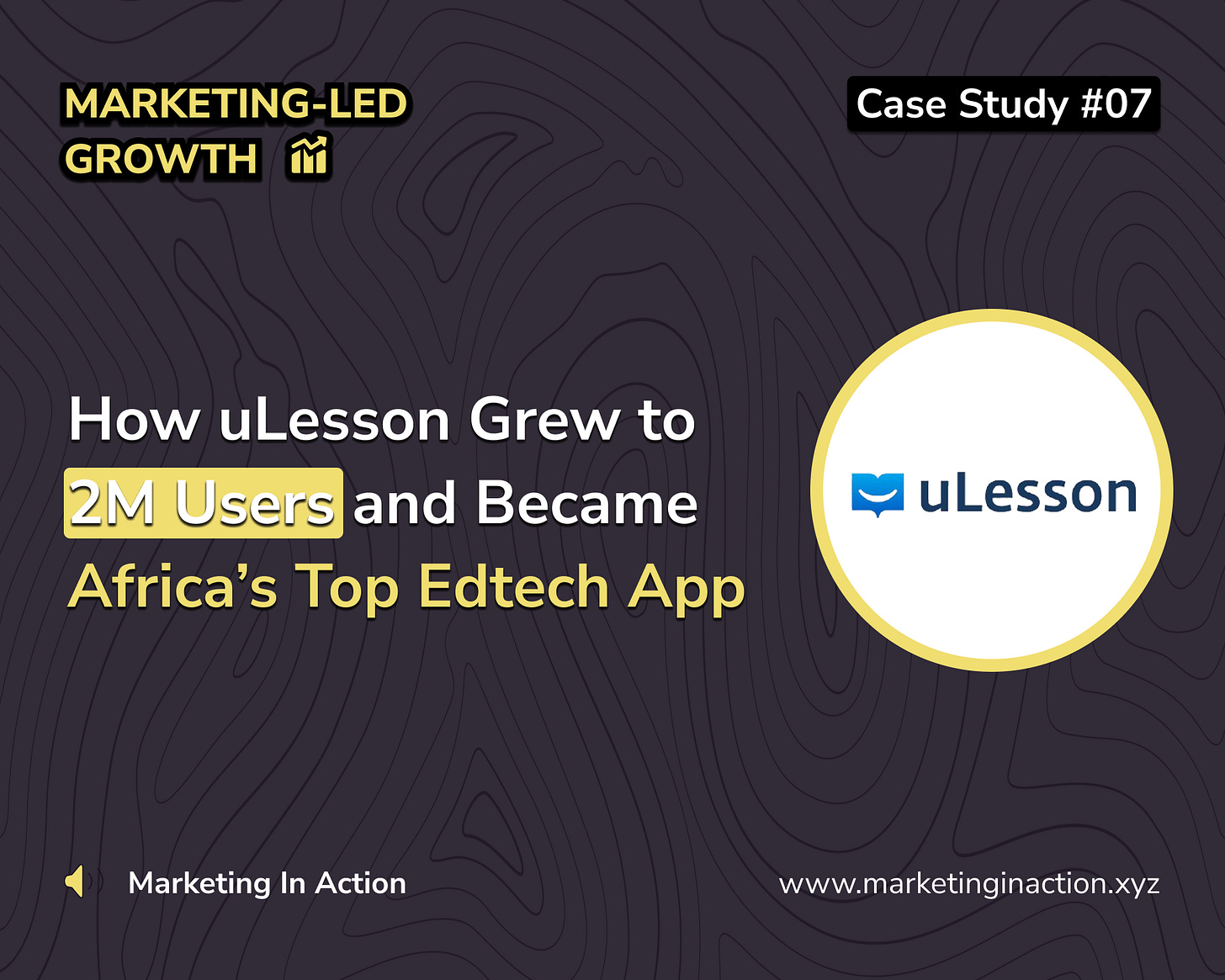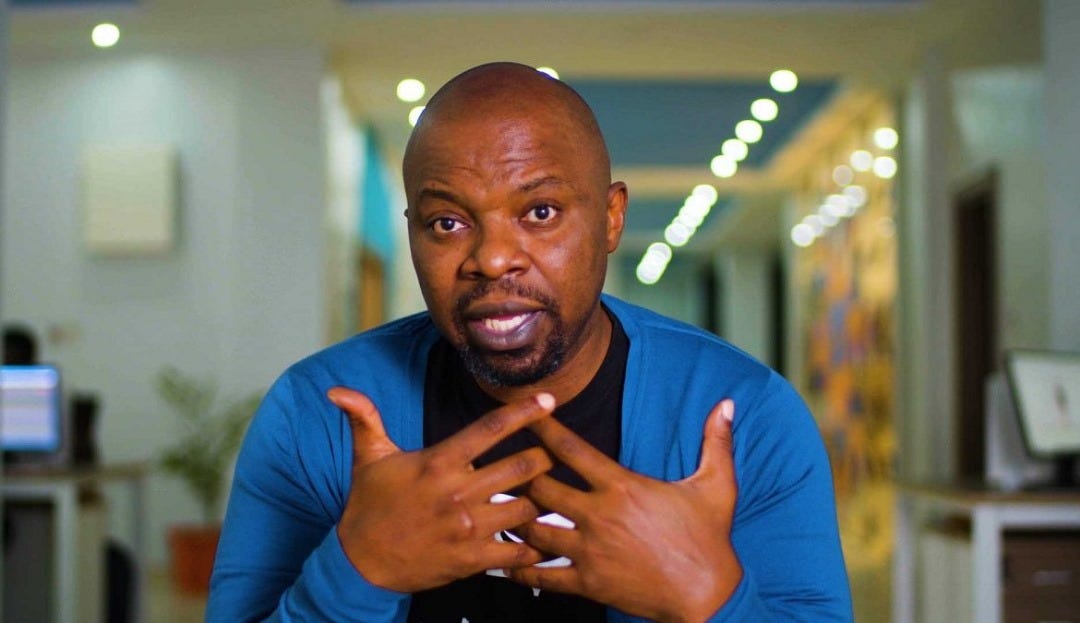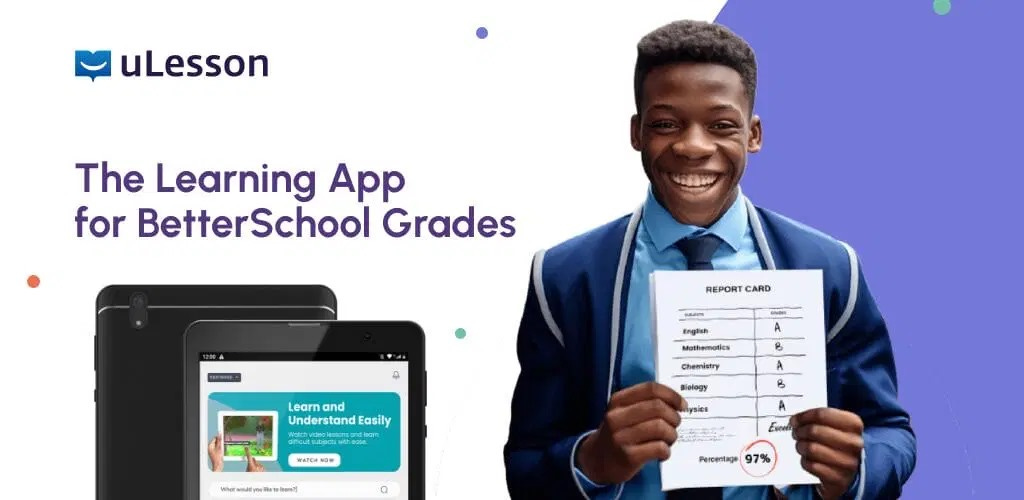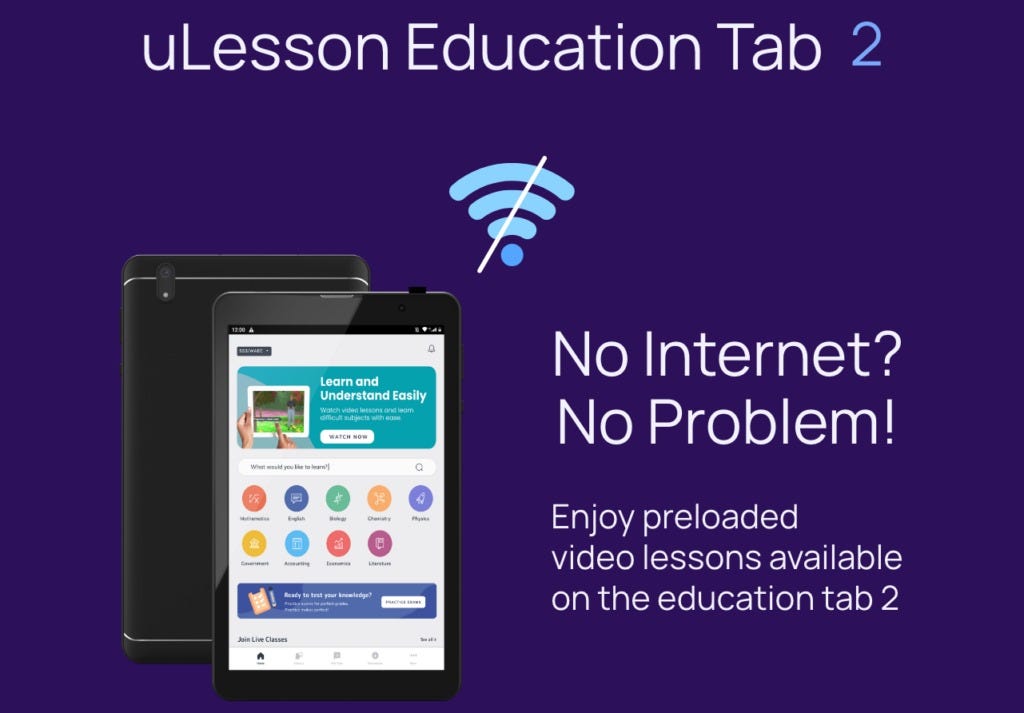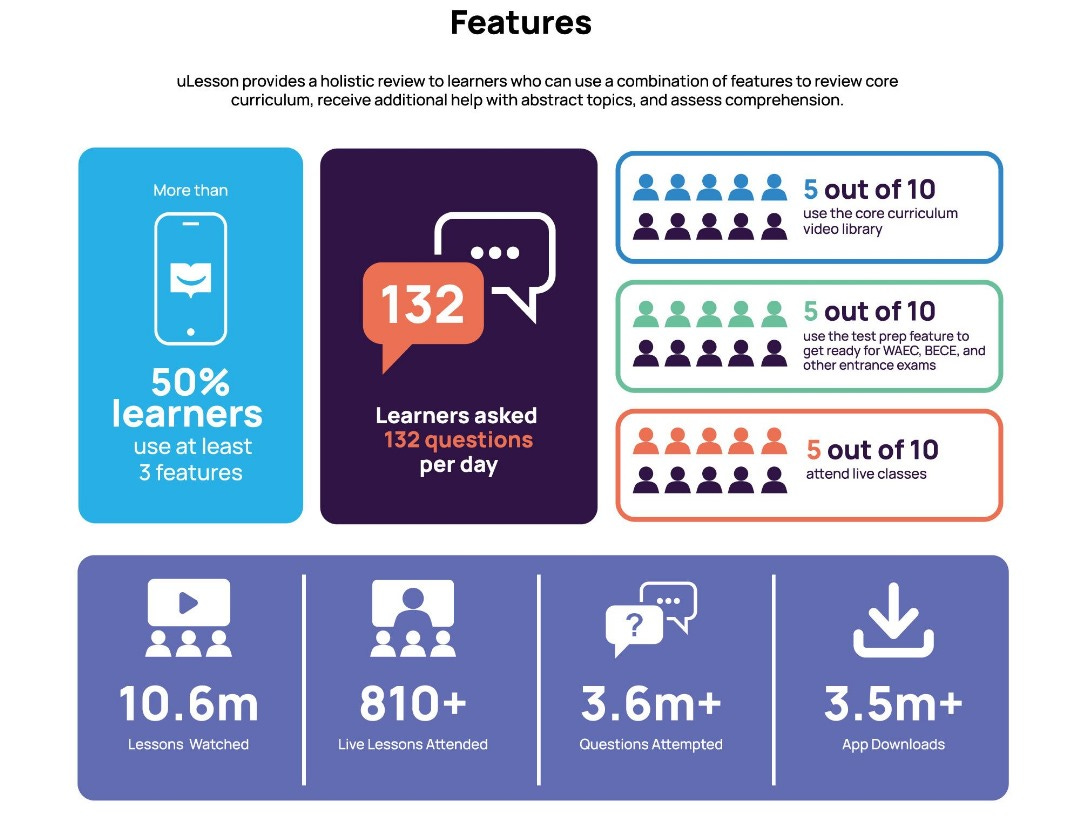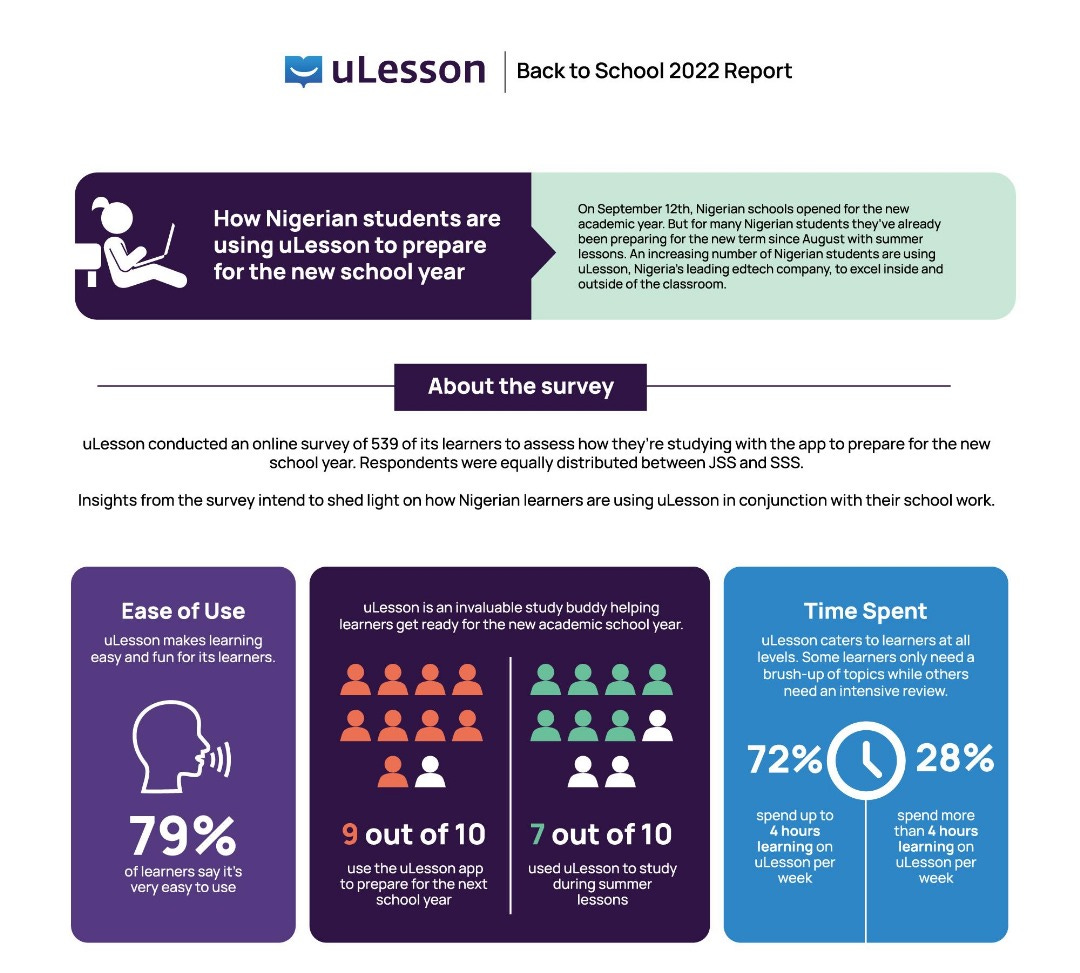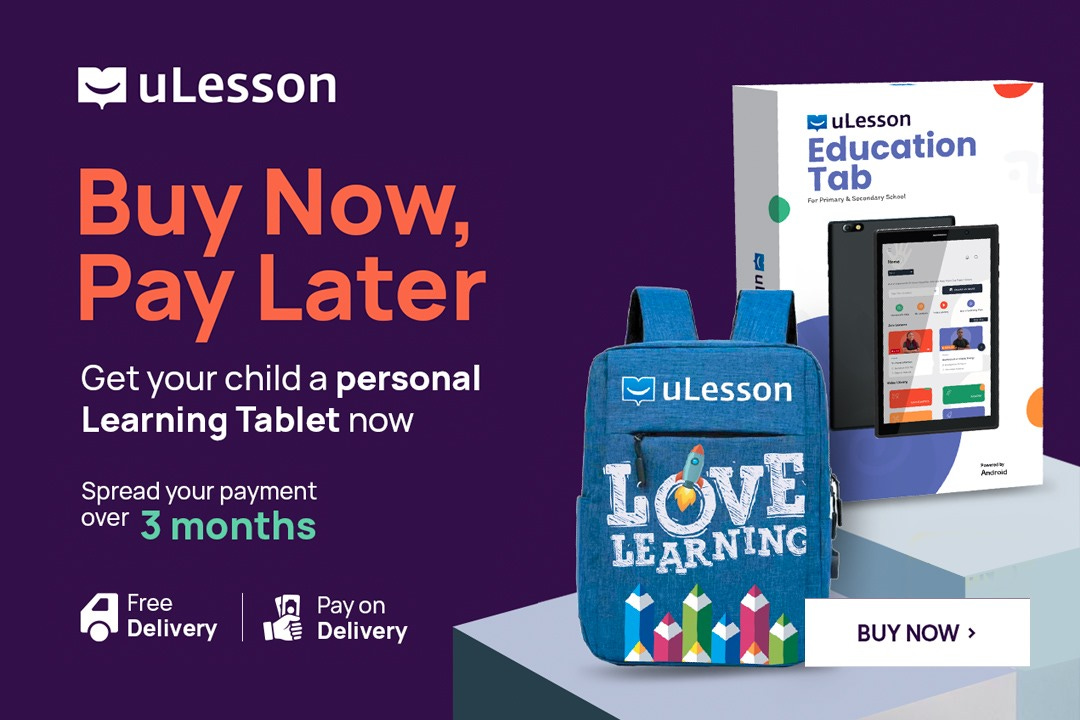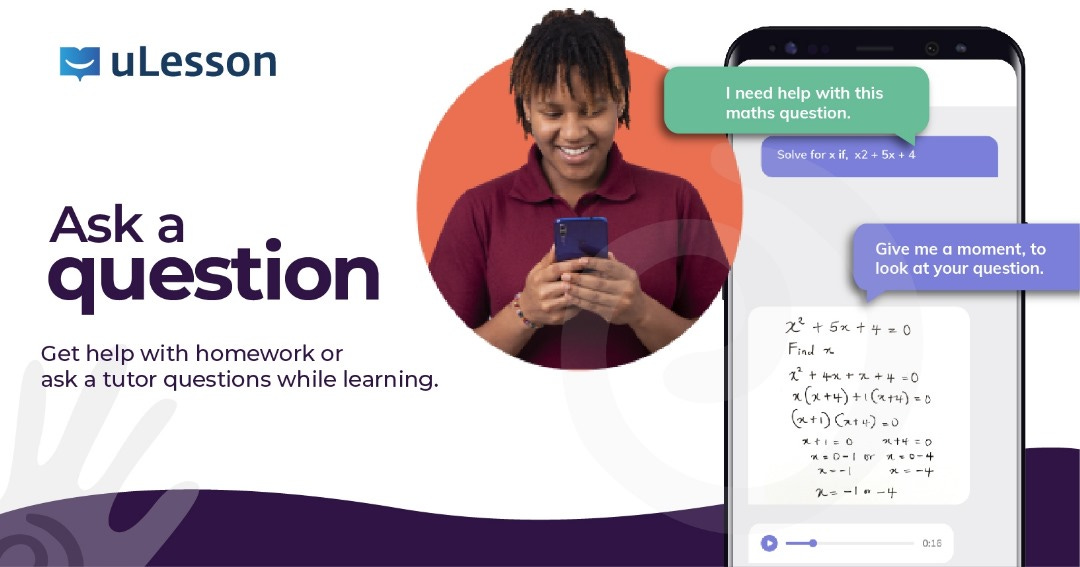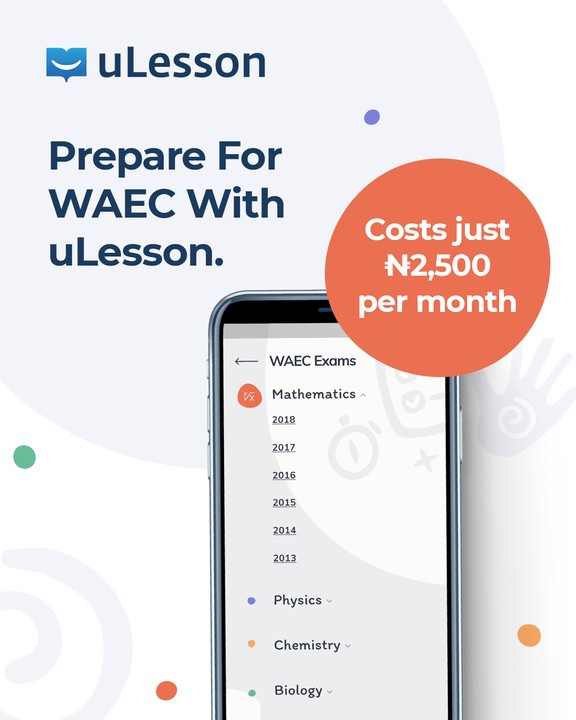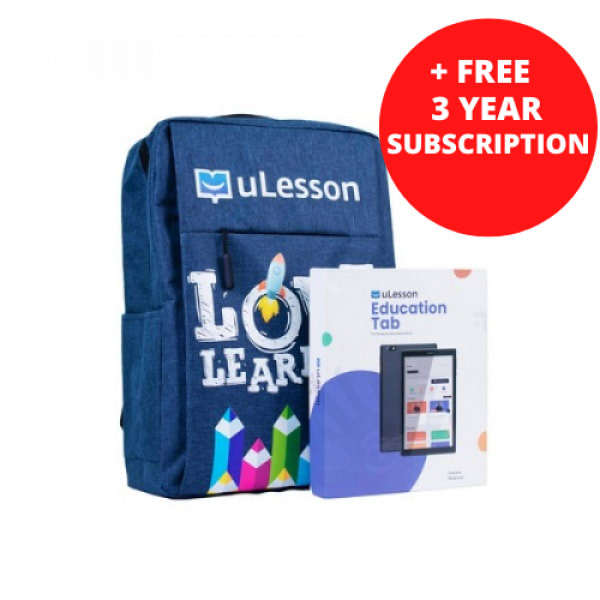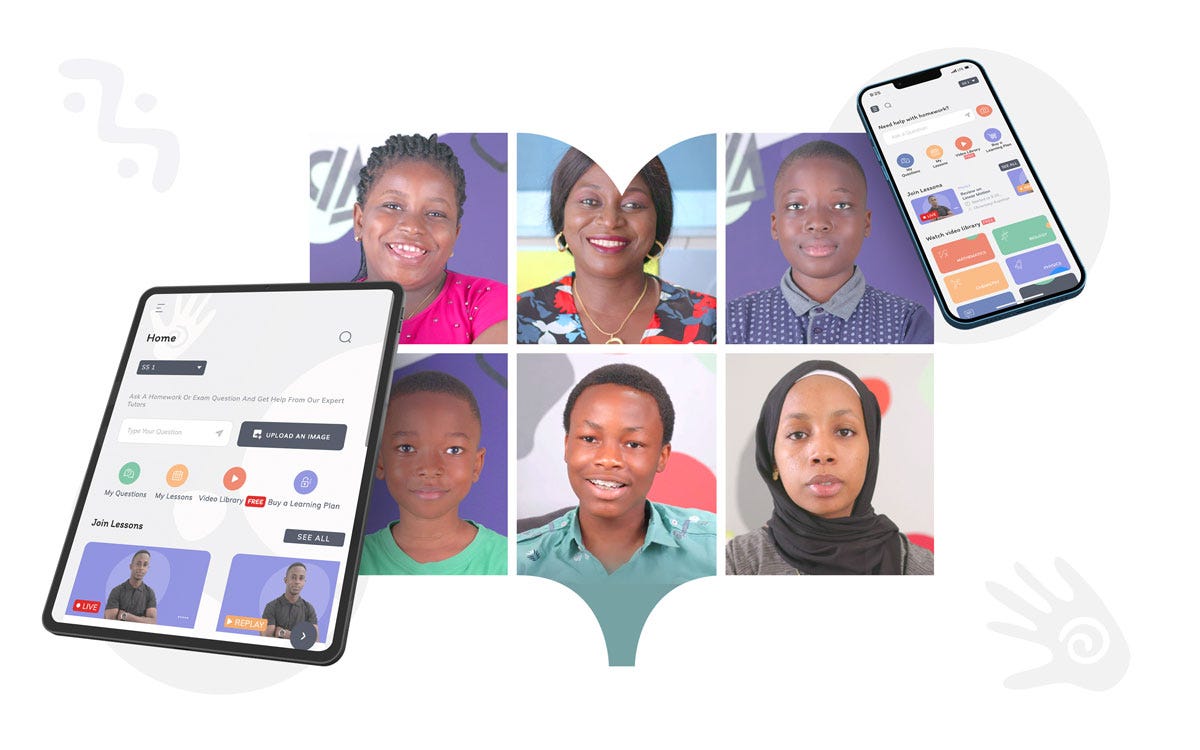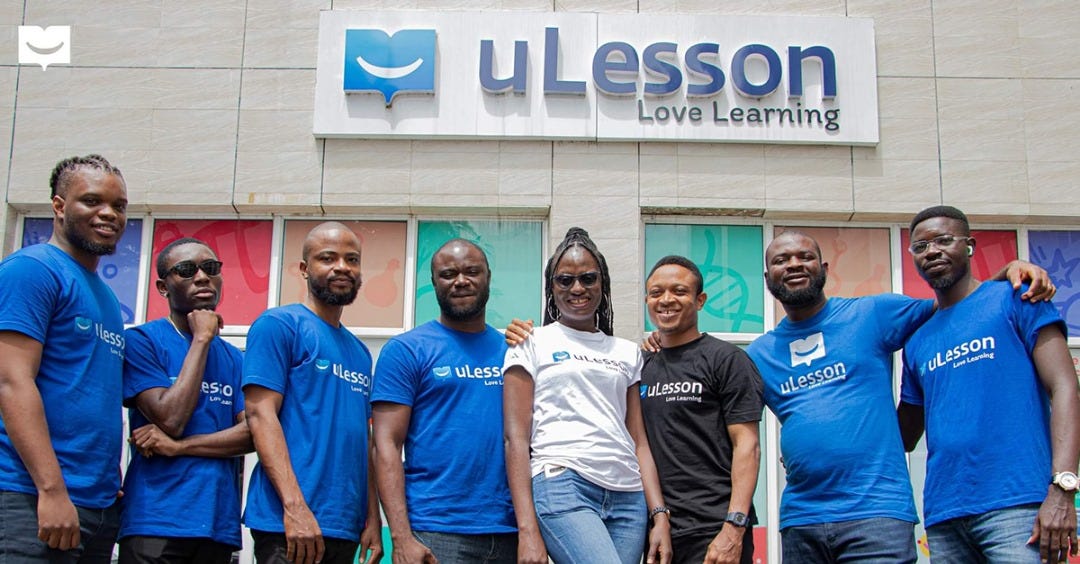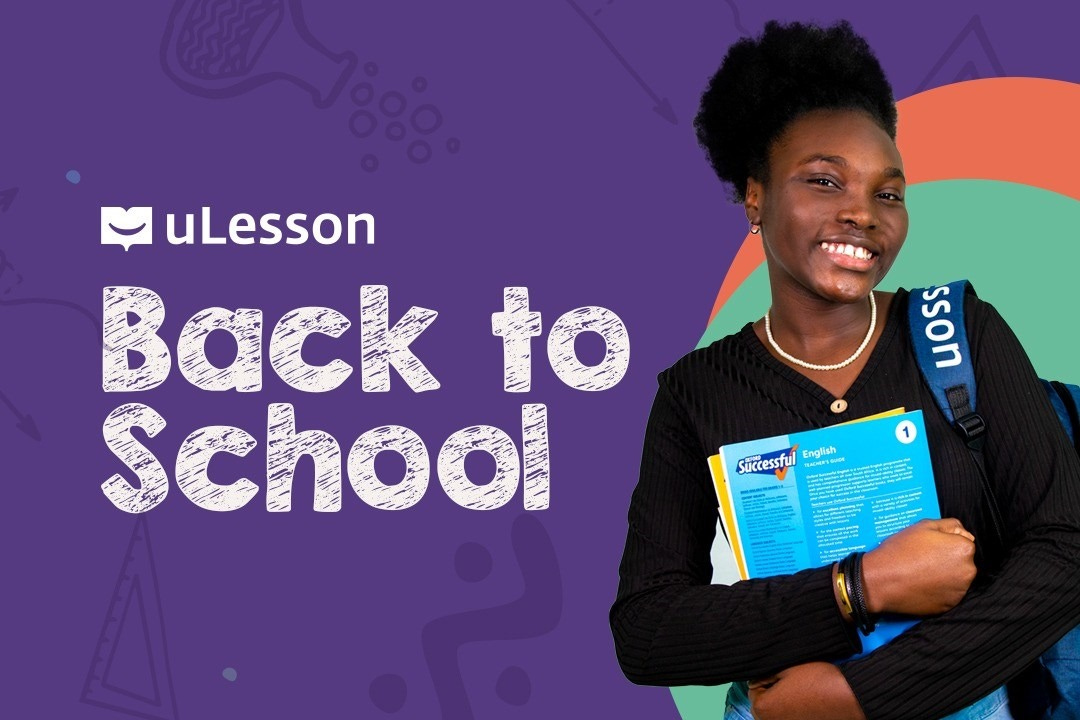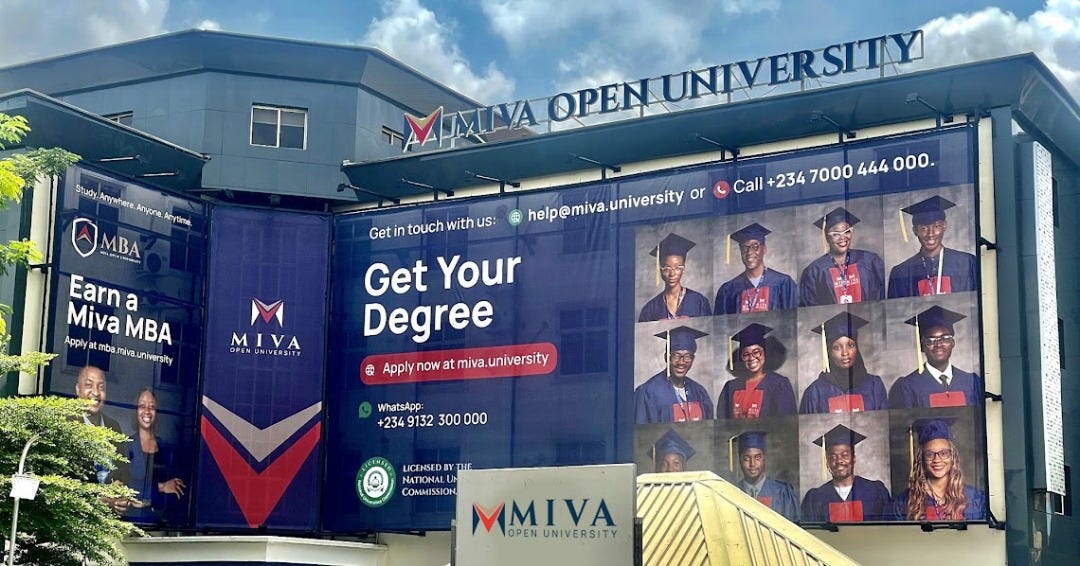How uLesson Grew to 2M Users and Became Africa’s Top Edtech App
This edtech app helps students access quality learning at an affordable price, without barriers.
🚨 ICYMI: We’re putting together the State of Marketing in African Tech Report, covering SaaS, FinTech, Web3, Healthtech, Edtech, HRtech, Agritech, Ecommerce, Energytech, Marketplaces, Entertainment Tech, Creators, and Agencies.
If you work in these industries, please share your insights via this 5-minute survey (and receive one-year subscriber access to 50+ Product & Growth marketing templates from the MIA Resources & Template Library).
The "Why" Behind uLesson
uLesson started in 2019, but the problem it was built to solve had been growing long before that. The founder, Sim Shagaya, had spent years building companies in Nigeria’s tech space. He launched Konga, one of the country’s earliest e-commerce platforms, and before that, helped build E-Motion Outdoor, an advertising company.
But underneath all of that, Sim had always held a soft spot for education. And not just because it was important, but because he had lived the consequences of what it meant when it wasn’t available.
He’d grown up in Plateau State, gone to school in Nigeria and later abroad, and he could see the gap clearly: the average child on the continent was being left behind. Overcrowded classrooms. Poor infrastructure. Underpaid teachers doing the best they could. And a growing population of young people trying to learn in systems that just weren’t working. Parents were paying out of pocket for private lessons, yet many students still struggled to pass common entrance or WAEC.
It wasn’t that these students weren’t smart. It was that the system wasn’t built to help them thrive. So Sim started thinking—what if tech could level the field?
Eventually, when Shagaya launched uLesson in 2019, he deliberately started with an unconventional solution: distributing video lessons using SD cards and USB drives, knowing that internet access was still a barrier for many students. This hands-on, context-aware approach sets uLesson apart.
As access to the internet improved and smartphone adoption grew across the continent, uLesson evolved into a robust learning app, layering in interactive features, practice tests, and live online classes. Sim shared this vision himself:
“When my colleagues and I set out to build uLesson in early 2019, we observed that for the vast majority of Africa’s K‑12 learners, quality education is out of reach. And we believed that technology would necessarily play a role in remedying this problem.”
Believing that technology could unlock access to education at scale, Sim understood that a conventional Western edtech template wouldn’t suffice. The solution had to adapt to African realities: local curricula, low-bandwidth connectivity, and affordability.
So, uLesson began in a way few could have predicted—delivering animated, curriculum-aligned video lessons via SD cards and USBs, enabling students without internet access to engage with rich, structured learning. This creative, offline-first approach set the foundation for what eventually led to the platform becoming an African-first learning platform.
Building and Launching the Product
When uLesson officially launched in 2019, it wasn’t trying to build the most high-tech product on the market. The team, led by Sim Shagaya, was focused on a different question entirely: How do you deliver quality education to a student who doesn't have Wi-Fi, steady electricity, or money for a private tutor? This question shaped everything about the product.
The first version of uLesson wasn’t an app at all—it was a collection of curriculum-based video lessons stored on SD cards and USBs. These were bundled with affordable Android smartphones and sent out to families across Nigeria. This offline-first approach might have looked outdated to outsiders, but in context, it was one of the smartest moves the team could’ve made.
Many edtech startups had already come and gone, building for an infrastructure that simply didn’t exist for the average Nigerian household. uLesson flipped that on its head—instead of trying to change user behavior to fit the product, they built a product that fit the reality of the users.
The content itself was another major investment. Rather than simply filming teachers writing on a whiteboard, the uLesson team set up a full production studio in Jos, hiring subject-matter experts, scriptwriters, and animators to create engaging, story-driven video lessons that could hold a child’s attention and make abstract concepts come alive.
The idea was to turn learning into something kids would actually want to do, not just something they had to do. Alongside the videos, the platform also included quizzes, assessments, and performance tracking, giving students a sense of progress and helping parents see what their children were learning.
The real magic, though, was in how everything came together: high-quality content, local curriculum alignment, offline accessibility, and a clear, mobile-first user experience—all backed by a small but determined operations team handling content creation, device distribution, and customer onboarding.
By the time uLesson released its Android app in early 2020—just before the COVID-19 lockdowns—the company was ready. What started as a low-tech workaround had become a gateway for millions of students to keep learning, even when schools shut down.
And unlike many digital tools that saw a spike during the pandemic only to drop off later, uLesson kept growing, because it wasn’t built as a crisis solution. It was built to last.
Achieving Product-Market Fit
uLesson’s journey to product-market fit was rooted in a deep understanding of the systemic challenges facing education in Africa.
After launching in early 2020, uLesson initially rolled out as a mobile app offering pre-recorded video lessons on a memory card bundled with a dongle. This was a deliberate move: it allowed the platform to overcome Nigeria’s biggest infrastructural bottleneck—data cost and poor internet access—while giving students access to high-quality lessons.
But the real validation came during the COVID-19 pandemic, when physical schools shut down and parents across Africa scrambled for remote learning solutions. uLesson quickly gained traction as more students turned to digital platforms for learning. The app saw tens of thousands of downloads across Nigeria, Ghana, and South Africa within months.
Simultaneously, the uLesson team took in real-time user feedback and adapted the product beyond recorded video. They introduced quizzes, homework help, and live classes to enhance interactivity and engagement. These improvements weren't just technical—they reflected a deep understanding of what students and parents actually needed from an edtech platform: accessibility, structure, engagement, and results.
👉🏽 Join the Marketing In Action WhatsApp Community where MIA Newsletter subscribers network, and gossip (what’s trending).
Go-To-Market Strategy
From day one, uLesson knew that building a great product wasn’t enough—they had to find the right way to get it into the hands of families across Africa. And the truth was, many of those families weren’t hanging out in app stores or waiting to discover new edtech tools online. So, the team made a bold move: they took the product offline to get it online.
The initial strategy was very boots-on-the-ground. Instead of relying solely on digital channels, uLesson built a distribution model that resembled what you might see in the FMCG world—physical sales agents, in-person demos, and direct-to-parent conversations.
They sold affordable Android phones preloaded with uLesson content, bundled with SD cards and dongles, and deployed them across homes, schools, and small retail outlets. In doing this, they didn’t just pitch a product—they introduced a new way of learning to parents who were often skeptical about digital tools.
Much of the early traction came from word of mouth. Parents who bought the product saw how their children engaged with it—and more importantly, how their children began to improve in school.
That word spread fast, especially in urban centres like Abuja, Port Harcourt, and Lagos. But the team didn’t stop there. They doubled down on field marketing: roadshows, school partnerships, teacher-led introductions, and regional campaigns that built awareness from the ground up.
In 2024, uLesson teamed up with MTN Nigeria in a major push to expand reach. MTN donated 4,600 tablets pre‑loaded with the uLesson app to secondary schools across Nigeria’s six geopolitical zones. Beyond the tablets, the collaboration included special data offers that allowed students to access educational content without worrying about airtime, effectively zero‑rating the platform for users under uLesson subscriptions.
As the product matured and internet penetration improved, uLesson began to shift online—running app campaigns, building a strong presence on YouTube and social media, and using performance marketing to target more digitally active parents.
They also tapped into the aspirational mindset of many African families by highlighting exam success, academic excellence, and structured learning—all outcomes parents deeply cared about. But even with this digital shift, uLesson never fully abandoned its community-driven roots.
Their go-to-market strategy blended traditional and digital distribution in a way that few African startups had attempted at the time, and that balance made all the difference. By meeting parents where they were, and not where the tech world expected them to be, uLesson earned both trust and loyalty.
User Base and Revenue
As uLesson found its footing in the market, its user base didn’t just grow—it evolved. In the early days, most users came through offline channels: parents who bought the preloaded Android devices, schools that signed up in groups, or teachers who recommended the platform during revision periods.
These were uLesson’s first believers—parents and learners who were ready to experiment with digital learning at a time when it was still unfamiliar to most households across Africa.
But things started to shift quickly. Once users got a taste of what was possible, lessons broken down in engaging videos, exam prep tools, quizzes, and a curriculum that mirrored what students were taught in school, the referrals kicked in.
Word-of-mouth was incredibly powerful. For many parents, especially in Nigeria’s middle class, it wasn’t just about education anymore. It was about giving their kids a competitive edge.
The team continued to refine the product and open up new features—live classes, in-app testing, and learning analytics for parents, all of which helped improve retention. Meanwhile, pricing was intentionally kept flexible: affordable monthly plans, bundles, and discounts during WAEC and UTME prep seasons.
They even experimented with freemium access in certain markets to draw users in before upselling premium features. This allowed them to expand access while still maintaining strong conversion rates.
By 2021, uLesson had hit over 1 million downloads, a number that told only part of the story. Behind those downloads were thousands of paying subscribers and families who renewed month after month. Revenue began to grow steadily, powered by a mix of subscription income, device sales in the early years, and later, value-added services layered into the learning experience.
One major turning point came during the COVID-19 pandemic. While many schools shut down, uLesson became a lifeline. Parents scrambled for options, and uLesson’s app already battle-tested, was ready. They saw an explosion in demand, and more importantly, an increase in paid users. It wasn’t just a spike in traffic. It was a signal: edtech had finally arrived as a necessity, not a luxury.
As the platform expanded into new regions like Ghana and Kenya and added more subject areas and grade levels, the business model continued to evolve. But what stayed constant was the understanding that revenue would follow value.
If the platform helped children perform better in school, parents would pay. And if it could do that at scale, across multiple countries and education systems, the business would keep growing—steadily, sustainably, and with purpose.
Fundraising Efforts
When uLesson launched in 2019, it didn’t start with a viral product or massive user traction. What it had was a bold thesis: that quality education, delivered through a mobile device, could change the academic outcomes of millions of African students. And that thesis had the credibility of its founder, Sim Shagaya—a tech veteran who had previously built Konga, one of Nigeria’s largest e-commerce platforms. Investors paid attention.
Early on, Sim made a strategic decision not to bootstrap. Edtech, especially one that aimed to serve multiple markets with localised content and custom devices, required heavy upfront investment. So in late 2019, uLesson raised a $3.1 million seed round led by TLcom Capital.
That initial capital went into product development, content production, and distribution. It was a bet on infrastructure: pre-recorded lessons, warehouse logistics for their learning devices, and a team of subject matter experts.
But the real turning point came with traction. Once parents began buying into the value, and once COVID-19 made digital learning feel not just optional but necessary interest from investors intensified. By 2021, uLesson announced a $7.5 million Series A, also led by TLcom, with participation from Founder Collective and other angels.
The timing couldn’t have been better. With usage surging and demand growing across new African markets, the company now had fuel to double down: hiring more engineers, expanding content to junior secondary and primary levels, and experimenting with live classes.
Not long after, in late 2021, they raised a $15 million Series B, led by Nielsen Ventures and existing backers. At that point, uLesson wasn’t just a Nigerian edtech startup—it was an African education company with growing pan-African ambitions.
The Series B was about depth and scale. More localised content. Better data infrastructure. Stronger parental dashboards. And the big one: more personalised learning, powered by AI and user behaviour data.
What’s Next for uLesson in 2025?
As uLesson enters its sixth year, the company’s focus appears to be shifting from just content delivery to creating a full-fledged learning ecosystem. With over 3 million app downloads and a strong presence across West Africa, uLesson is now eyeing deeper engagement, personalized learning, and regional scale.
In an increasingly competitive edtech market, 2025 may see uLesson deepen its AI-powered learning experiences—building on its 2023 release of adaptive practice tests and real-time performance tracking.
The goal, according to founder Sim Shagaya in past interviews, is not just to digitize content but to “make learning as intelligent and responsive as possible.” This means better curriculum mapping, predictive analytics to help struggling students, and possibly integrating more languages to localize the experience across Africa.
Finally, uLesson is expected to keep investing in offline access solutions, particularly for underserved regions where internet penetration remains low. From dongles and SD cards to downloadable lesson packs, accessibility continues to be core to its mission.
Sim Shagaya’s vision also led to Miva Open University, an accredited online university the team launched in 2024.
Through Miva, uLesson is moving beyond secondary education into full-scale higher learning, offering degree programs in business, computer science, and software engineering.
Beyond undergraduate degrees, Miva also offers postgraduate pathways—including an MBA and a Master of Public Administration (MPA)—that extend uLesson’s reach into professional and public-sector leadership. The MBA program officially launched on April 2, 2024, marking Miva’s first step into graduate education.
In 2025, the university introduced MIND (Miva Interactive Neural Dialogue), an AI-powered learning partner for one-on-one, case-study-driven discussions and adaptive feedback, deepening the “intelligent and responsive” vision across its programs.
Since launch, Miva has scaled from an inaugural cohort of 532 students to over 5,000 by the end of 2024—matriculating 3,000+ learners across 14 approved undergraduate programmes—and now counts 200+ faculty who have delivered nearly 2,000 learning modules.
☝🏽 A personal note:
I believe Sim Shagaya and the uLesson team have succeeded at marketing so much that when I was choosing an MBA program, I chose Miva Open University.
The MBA program has so far lived up to its promises, helping to ground me in core disciplines like accounting, finance, marketing, and operations management.
I’ve even built several AI workflows & agents to boost my productivity during the program, and create ready-to-use templates—just as I do with MIA. Here’s a workflow I built to automate some financial and accounting models.
If I have kids sometime in the future, I’ll definitely be getting them on the uLesson app. I’ve experienced Miva University firsthand and explored uLesson’s learning experience—it’s amazing.
🧩 Put this case study into action.
Use our startup-tested templates for GTM, positioning, and growth. Explore the Marketing Toolkit Subscription.
20% off all MIA handbooks and templates when you use the code: MIA Community.
If you want to collaborate or feature your product in this newsletter, check out our media kit, and shoot me an email.
We’re building a village of 5,000+ marketers and founders who want to increase their odds of succeeding at marketing. Share this newsletter with them.




